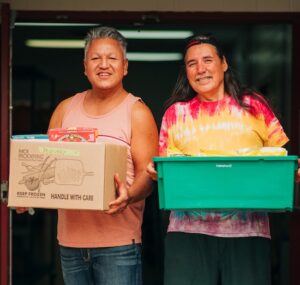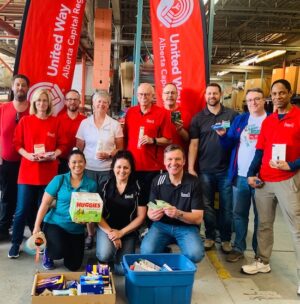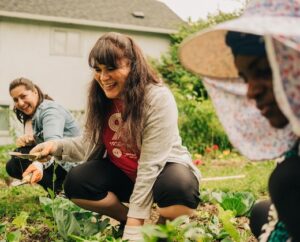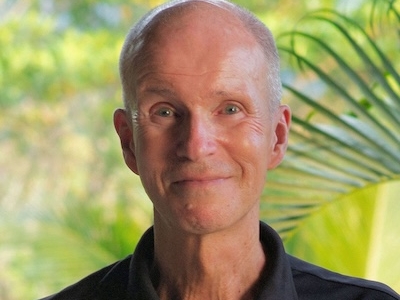
Dan Clement, President and CEO of United Way Centraide Canada.
Dan Clement is President and CEO of United Way Centraide Canada. He spoke with PANL Perspectives about transformations in the past 10 years and future plans, including the impact of tariffs. UWCs have been serving local communities across Canada for more than a century. Every year, they raise and invest approximately $600 million, supporting an ecosystem of more than 4,700 community service organizations and initiatives across the country. Close to a million Canadians, donors and volunteers are mobilized to support their local communities through giving and to address basic needs, but also to advocate for long-term solutions.
Question: In the past decade or so, why have there been so many transformations with United Way Centraides across the country?

United Ways and Centraides mobilize approximately a million Canadians, donors and volunteers to support their local communities each year. Photo courtesy of United Way Centraide Canada.
Dan Clement: Ten years ago, we were 108 United Way Centraides in Canada. Today, we’re 57 in a federated model. That’s significant organizational change that we’ve lived through and helped to advance. It wasn’t an accident. This was an intentional transformation process led by United Way Centraide Canada and local volunteer and staff leaders. Why did we do it? We were observing rapid change in our communities and in philanthropy that called on us to adapt and change the way we work and to re-imagine our operating model. New technologies, dramatic shifts in philanthropy, equity issues in communities, an aging population, the long-term trend of fewer donors in Canada, and in recent years the pandemic and climate impacts on people and communities were some of the changes we observed.
Also, challenges in our communities became increasingly complex. If you’re talking about poverty and social exclusion, you’re also talking about employment, equity, mental health and complex social issues that required our operating model as UWCs to work in different ways, to be structured differently. So, those are some reasons we changed over the past decade.
Question: How did you tackle the massive number of changes?

UWC transformations led to more than 20 mergers and integrations, resulting in newly formed United Ways and Centraides that are grounded in local leadership. Photo courtesy of United Way Centraide Alberta Capital Region.
Dan Clement: The very first thing we did was develop a 10-year vision to be an impact leader in Canada and to be a high-performing movement. UWC is a federated movement of local organizations. Setting a shared vision for the future was a critical step in this process.
The second thing we did was look at data about our performance as a network and as local UWCs to better understand how we were doing in the delivery of our mission to empower everyone to improve lives and build strong communities. This focus on data helped us to better understand where we were experiencing challenges, where we had opportunities to strengthen our work, and where we needed to invest in our change.
Also, we explored what it meant to be an impact leader in Canada and defined our standards of practice to bring our vision and mission to life.
And the fourth thing, which is really what triggered the big change, was a reflection about our organizational models. We looked at our locations, scale and our performance data. We hosted discussions across the country with local board and staff leaders to envision new organizational models. This took time, but the process led to more than 20 mergers and integrations resulting in newly formed United Ways and Centraides — grounded in local leadership that’s more resilient in a rapidly changing world and with the capacity to invest in new ways of working and in new partnerships.
Not every one of the processes that we went through led to a merger, and that was okay. We had many UWCs that said, “Hey, that’s not the right solution for us, but we’ve learned who we are and how we need to work differently.” They built their own stronger organizations. Every single decision was made by local leaders and local boards of directors.
Question: Were revenues falling in those 10 years?
Dan Clement: Yes, we experienced the shifting trends in philanthropy and giving, and we saw this in our performance data, including flattening revenues. Every organization wants to grow, and we saw that our traditional sources of revenue, like workplace fundraising, were changing. We experienced what every organization was experiencing: fewer donors in Canada. Workplace giving remains very important today, and our transformation challenged us to build our capacity to diversify how we were raising funds and working in partnership with donors, corporations and government.
One example of working in new ways occurred during the pandemic, during our work across Canada with the federal government and corporate partners to invest more than $300 million in much-needed funds for essential community services.
Question: How are the current economic uncertainties, like tariff threats, affecting the organization – and how are you addressing them?

United Ways and Centraides are helping to ensure that economic investments that are intended to stimulate growth and a productive economy are, at the same time, resulting in direct benefits to communities. Photo courtesy of United Way British Columbia.
Dan Clement: In some ways, March 2025 felt like March 2020. We’re hearing from our local communities that they’re already seeing layoffs, temporary closures and delayed investments. This will translate into higher demand for services, with more people needing access to community services, many for the first time. Economic impacts have social impacts – and frontline community service organizations will face them.
We have articulated a four-part public policy plan to address the economic and social impacts. The first part relates to responses from government, community and philanthropy. We have to make sure that the community services sector is front and centre — and named and included in those responses. Economic investments that are intended to stimulate growth and a productive economy should, at the same time, result in direct benefits to individuals and communities where these investments are taking place.
The second part is to support people affected through targeted income supports, and through more flexible eligibility criteria for Employment Insurance. We also need labour-adjustment programs, which are important community supports that help affected workers transition to new employment. These are all important investments.
Third, we need to understand that community service organizations are under stress systemically, because the demands are significant and growing, but also because of the way government and philanthropy funds. We need to focus on long-term, sustainable and mission-based funding. During the pandemic, many organizations, foundations and others shifted to more flexible funding. The same needs to be true today. As we experience economic shocks, our community organizations need sustained relationships and funding commitments for the long-term.
And the last thing: we need community based organizations that aren’t just service providers. They need to be community builders. So, when there’s an economic investment in a particular region, you need community-based organizations to pull the community together, to ensure the lived experience of that community is part of conversations. That’s a different type of work. That’s community-building work, which isn’t often something that gets funded. It’s important for how things are going to play out in the coming years.
United Way Centraide Canada is on LinkedIn, Instagram, X, and Facebook.
Sign up for PANL Perspectives, MPNL’s free newsletter.
Monday, March 31, 2025 in For homepage, General, News & Events
Share: Twitter, Facebook



